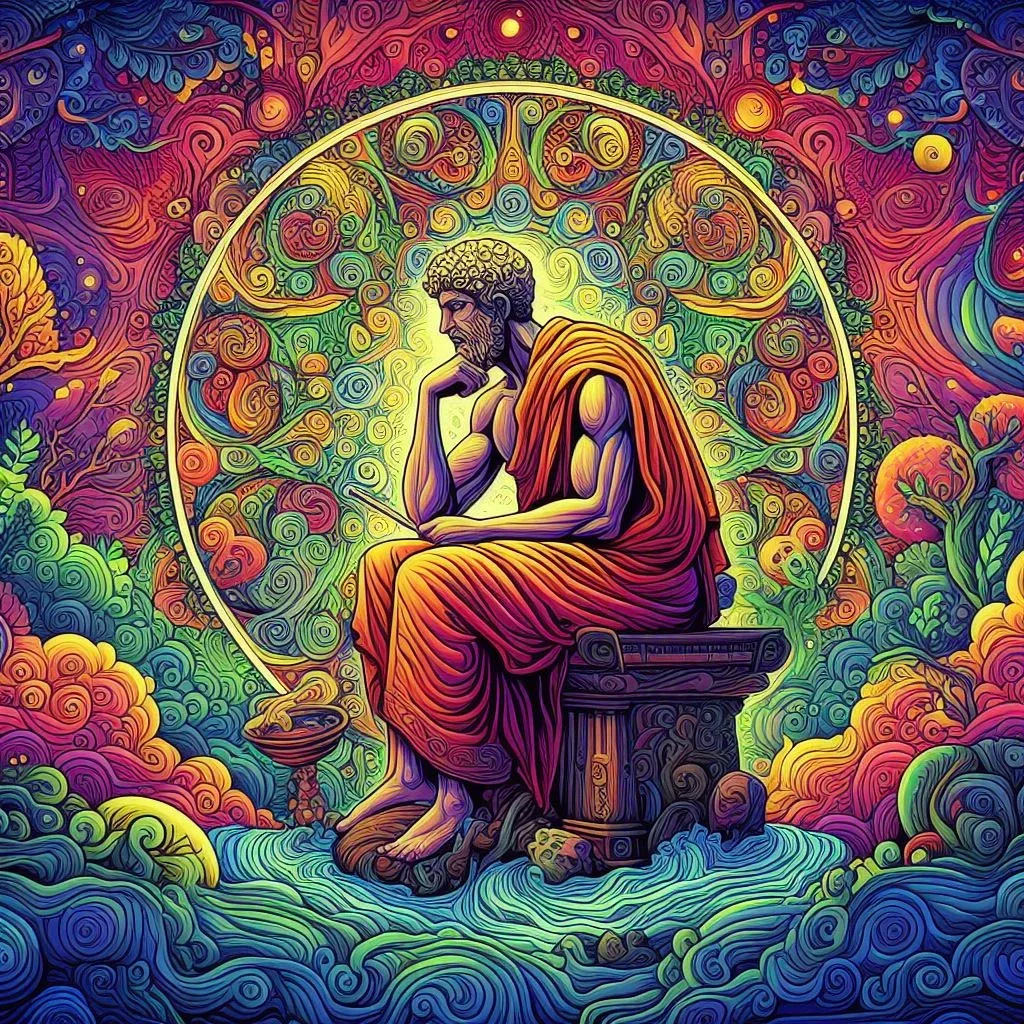Anxiety is a reality that many of us deal with in our busy, stressful lives. However, Stoic philosophy, which dates back to ancient Greece, offers valuable insights into how to manage anxiety and find inner serenity. In this article, we will delve into the depths of Stoicism and explore how its techniques can be applied to managing anxiety. Let's uncover the teachings of the great Stoic philosophers, such as Seneca, Epictetus and Marcus Aurelius, and discover how their ideas can help you achieve inner peace.

Understanding Stoicism
Before we dive into anxiety management techniques, it's important to understand the fundamental principles of Stoicism. This ancient philosophy emphasizes the importance of virtues such as wisdom, courage, justice and moderation for a meaningful life. The Stoics believed that internal control over external circumstances was fundamental, and they encouraged calm acceptance of that which cannot be changed.
Acceptance and Internal Control
One of the cornerstones of Stoicism is acceptance. The Stoics taught that many of the things that cause us anxiety are beyond our control, such as unexpected events and the actions of others. Therefore, the key to finding serenity is to accept what cannot be changed and focus on what is within our control.

Stoic Technique: The Circle of Concerns
An effective technique for dealing with anxiety is the “Worry Circle.” Imagine a circle divided into two parts: the inner and the outer. The inner part represents the things you can control, while the outer part symbolizes what is beyond your control. By focusing on your internal concerns and accepting that external ones are outside your domain, you can reduce anxiety.
The Impermanence of Life
Another central tenet of Stoicism is meditation on impermanence. The Stoics believed that life is ephemeral and that many of the things we value are fleeting. Accepting this reality can help us reduce anxiety about the future and material goods.
Stoic Technique: Death Meditation
Death meditation is a Stoic practice that involves reflecting on mortality and the transience of life. By doing this regularly, you can gain a deeper appreciation for existence and reduce anxiety about the uncertainty of the future.
Control of Emotions
The Stoics also valued emotional self-control. They believed that emotions are often automatic reactions to external events, but we can choose how to respond to these emotions.
Stoic Technique: The Distancing Method
The Distancing Method is a technique that involves moving away emotionally from a situation before reacting. By taking a step back and rationally analyzing the situation, you can avoid impulsive, anxiety-driven reactions.
Mindfulness and Gratitude

Mindfulness, or the practice of full awareness, is another area where Stoicism can be applied. The Stoics encouraged reflection on the present and gratitude for the simple things in life.
Stoic Technique: The Gratitude Journal
Keep a gratitude journal where you write down the things you are grateful for every day. This can help direct your focus to what's going well in your life, reducing anxiety about what's missing.
Ethics and Values
Stoicism is also based on sound ethical principles. The Stoics emphasized the importance of acting in accordance with virtue and striving for moral excellence.
Stoic Technique: The Golden Rule
The Stoic Golden Rule involves treating others the way you would like to be treated. Practicing kindness and justice can contribute to healthy relationships and reduce anxiety resulting from interpersonal conflicts.
Great Stoic Philosophers and their Lessons
To understand more deeply how Stoicism can be applied to managing anxiety, it is helpful to explore the contributions of some of the great Stoic philosophers.
Seneca: The Irrelevance of Concerns
Seneca taught that many of our daily concerns are irrelevant in the grand scheme of things. He advised not to waste mental energy on trivial things, which can be an effective strategy for reducing anxiety.
Epictetus: The Power of Choice
Epictetus emphasized that we are responsible for our own reactions and choices. He believed that we can control our judgments and therefore our emotions. By recognizing this power of choice, we can reduce anxiety.
Marcus Aurelius: Acceptance of Human Nature
Roman Emperor Marcus Aurelius addressed the importance of accepting human nature, with all its flaws. Recognizing that we all make mistakes and that perfection is unattainable can ease anxiety about unrealistic expectations.
Applying Stoicism to Everyday Life
Now that we've explored Stoic principles and techniques, let's consider how we can apply them to managing anxiety in everyday situations.
At work
- Accept uncertainty: When faced with an uncertain situation at work, focus on what you can control, such as your preparation and effort.
.
- Keep Calm: Use the Distancing Method to avoid impulsive reactions to challenges at work.
- Practice gratitude: Remember to be grateful for the opportunities and growth that your work provides.
In Relationships
- Apply the Golden Rule: Treat others with kindness and understanding, reducing conflict and anxiety in interpersonal interactions.
- Accept human nature: Recognize that everyone makes mistakes, including you and your loved ones. This can ease pressure on relationships.
In Everyday Life
- Keep a Gratitude Journal: Write down things you are grateful for daily to focus on the positive.
- Practice death meditation: Take time to reflect on the impermanence of life and gain a deeper appreciation for existence.
Conclusion
Stoicism offers a profound and effective approach to managing anxiety. Its techniques, based on acceptance, meditation on impermanence, emotional self-control, mindfulness, ethics and values, can be applied in different areas of life. By following the teachings of the great Stoic philosophers such as Seneca, Epictetus, and Marcus Aurelius, we can find inner serenity and cope with anxiety more effectively. So may these Stoic principles be a compass on your journey toward inner peace and personal fulfillment.
Remember, anxiety is a natural part of life, but with the tools of Stoicism, you can face it with courage, wisdom, and serenity.
FAQ on Stoicism and Anxiety Management
In this FAQ, we will address some of the key questions related to Stoicism and managing anxiety, building on the content discussed in the previous article.

1. What is Stoicism?
Stoicism is an ancient philosophy that emphasizes the importance of virtues such as wisdom, courage, justice and moderation for a meaningful life. The Stoics believed in internal control over external circumstances and the calm acceptance of what cannot be changed.
2. How can Stoicism help manage anxiety?
Stoicism offers techniques and principles that can be applied to manage anxiety. This includes practicing acceptance, reflecting on impermanence, emotional self-control, mindfulness, ethics, and valuing virtues.
3. What is the “Circle of Concerns” technique?
The “Worry Circle” is a Stoic technique that involves dividing your worries into two categories: internal (in your control) and external (outside your control). By focusing on internal concerns and accepting external ones, you can reduce anxiety.
4. How does death meditation help reduce anxiety?
Death meditation is a Stoic practice that involves reflecting on mortality and the impermanence of life. This can help you gain a deeper appreciation for existence and reduce anxiety about the future and material possessions.
5. What is the Distancing Method in the Stoic technique?
The Distancing Method is a stoic technique that involves emotionally distancing yourself from a situation before reacting. This allows for a more rational analysis of the situation and helps to avoid impulsive reactions driven by anxiety.
6. How can I practice gratitude in the Stoic context?
You can practice gratitude by keeping a gratitude journal where you write down the things you are grateful for every day. This helps direct your focus to what is going well in your life, reducing anxiety about what is missing.
7. Who are some of the most important Stoic philosophers?
Some of the most important Stoic philosophers include Seneca, Epictetus, and Marcus Aurelius. They each contributed valuable insights into how to apply Stoicism to everyday life and managing anxiety.
8. What is the Stoic Golden Rule?
The Stoic Golden Rule involves treating others the way you would like to be treated. Practicing kindness and justice can contribute to healthy relationships and reduce anxiety resulting from interpersonal conflicts.
9. How can I apply Stoicism at work to manage anxiety?
At work, you can apply Stoicism by practicing accepting uncertainty, staying calm with the Detachment Method, and practicing gratitude for what your work offers.
10. How can Stoicism be applied to personal relationships?
In the context of personal relationships, you can apply Stoicism by using the Golden Rule, treating others with kindness, understanding and accepting human nature, recognizing that everyone makes mistakes.
We hope these answers have clarified some of your main doubts about Stoicism and anxiety management. Remember that Stoicism is a practical philosophy that can help you find inner serenity and cope with anxiety more effectively.






